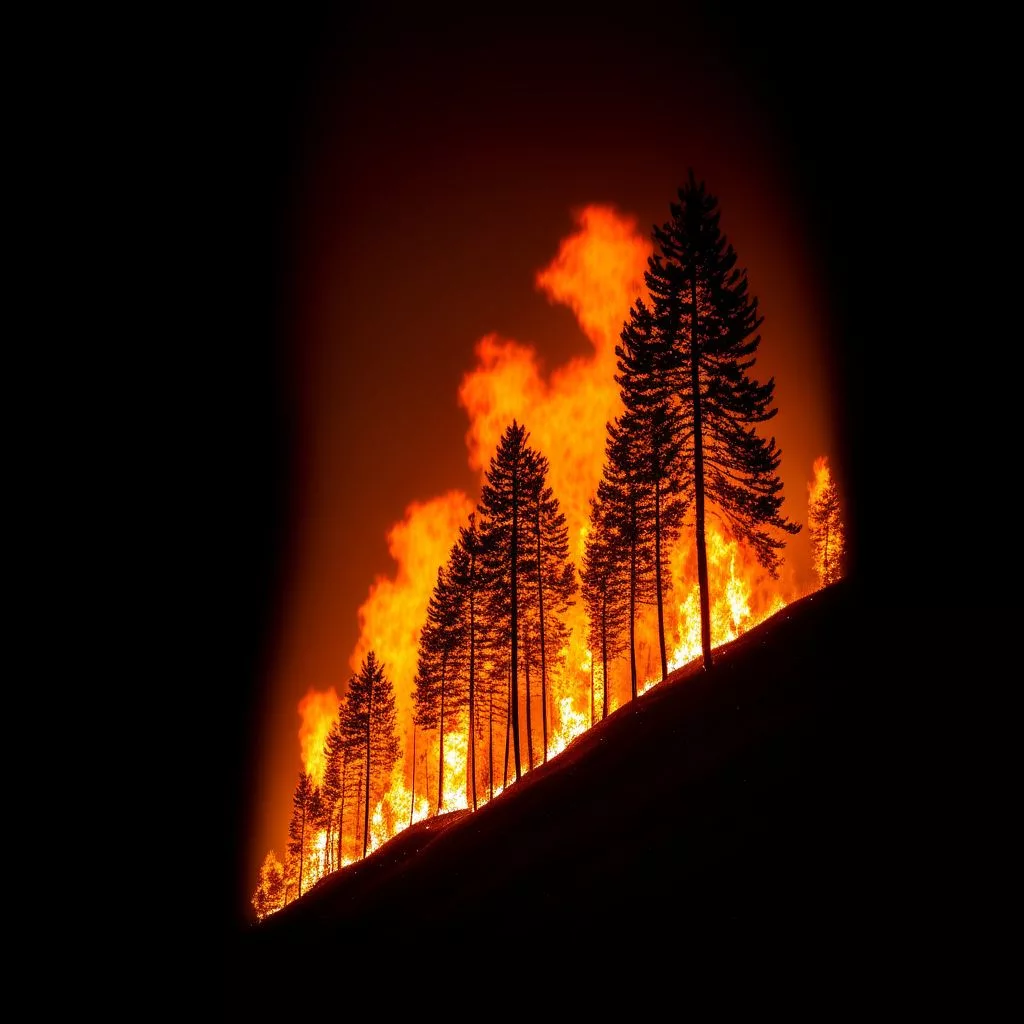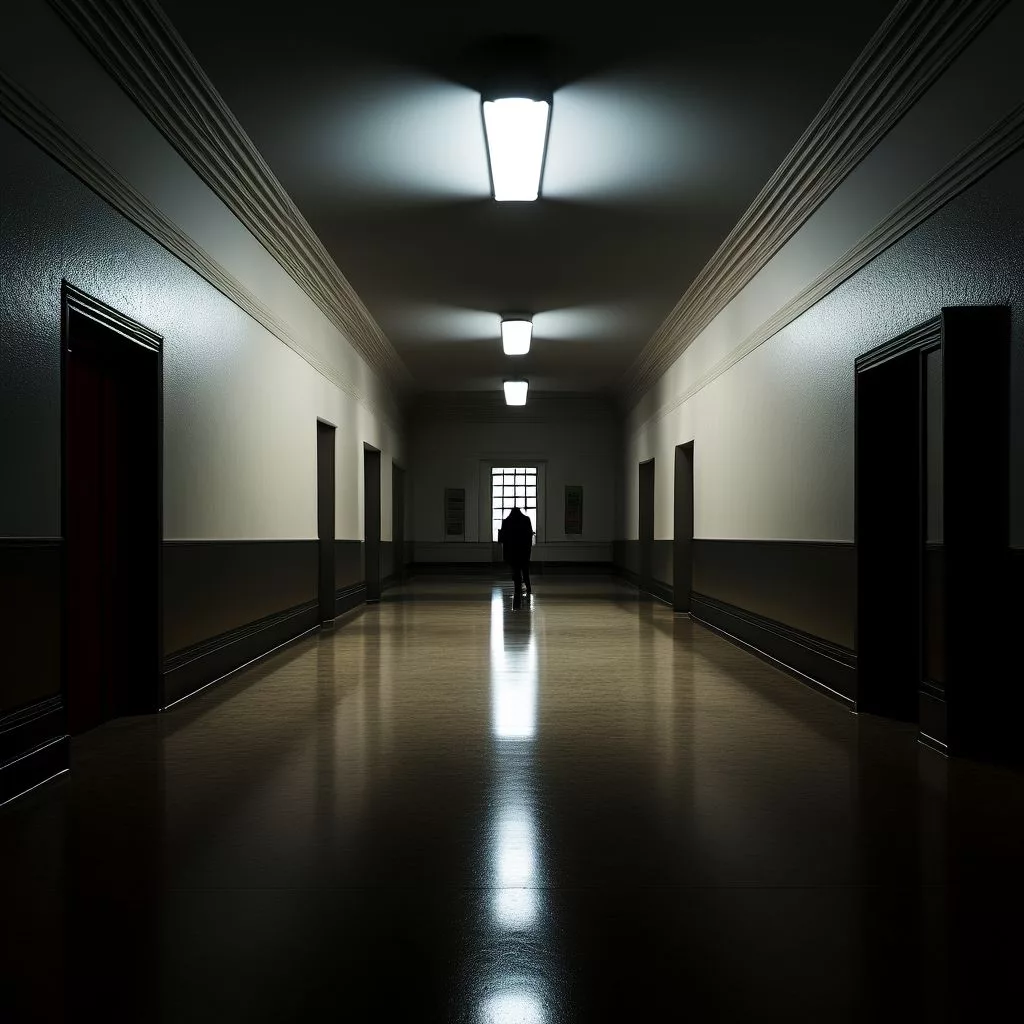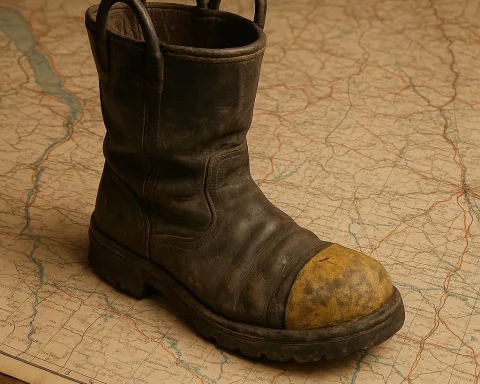A fierce wildfire broke out on Tokai’s slopes, lighting up the night with bright orange flames that threatened the rare fynbos and historic trees. Firefighters, volunteers, and local residents quickly joined forces, using early warnings and careful teamwork to fight the blaze. Calm winds helped slow the fire’s spread, allowing the community to protect their homes and nature. Though the fire scarred the land, the people’s courage and care showed how deeply they value and protect their unique environment.
What happened during the wildfire in Tokai and how did the community respond?
A wildfire broke out on Tokai’s slopes, threatening unique fynbos and historic sites. Firefighters, volunteers, and residents united to fight the flames, using early warnings, firebreaks, and support efforts. Calm winds and coordinated action helped contain the fire, highlighting the community’s resilience and commitment to environmental stewardship.
A Community on High Alert
On the border between Friday night and Saturday morning, Tokai’s slopes—already legendary for their tangled pine forests and rare fynbos—erupted into a scene both terrifying and oddly beautiful. Upper Tokai’s landscape, a mosaic of plantations and natural vegetation, became the epicenter for a wildfire that, while familiar to the area, never fails to stir deep anxiety. The flames, fierce and unpredictable, sent orange light dancing across the dark city, etching dramatic shapes into the night.
The initial spark came quietly, starting as three small fires in the underbrush. Local officials quickly voiced suspicions that someone had lit them on purpose. Shortly after midnight, the community’s main WhatsApp network, centered on Ward 71, began to bristle with activity. Urgent messages advised residents to stay alert, report anything out of the ordinary, and keep emergency numbers within reach. The rapid exchange of information revealed a neighborhood bonded by both fear and determination, ready to protect their homes and each other in the face of a familiar but always alarming threat.
By 9:30 in the evening, Parkscape—a dedicated environmental group with deep roots in Tokai—had already sent out warnings. Their alert detailed the new wildfires, noting that fire crews had begun to mobilize. Within two hours, the situation worsened; flames climbed to a Level 4 on the fire intensity scale, a stark reminder of nature’s raw force. One of the blazes, oddly shaped like a glowing crown, pressed north despite the efforts of those fighting to contain it.
Facing the Flames: Firefighters and the Landscape
As darkness deepened, updates poured in, mapping the relentless advance of the fire. At 4:18 am, the inferno snaked across Constantiaberg’s slopes, its glow visible for miles. Constantiaberg, a mountain with a history stretching back to Khoisan herders and colonial-era forests, now stood witness to another chapter in the ongoing struggle between humanity and the wild.
Firefighters from Table Mountain National Park joined municipal emergency services in the effort. Both seasoned professionals and local volunteers moved with practiced coordination, their reflective gear cutting through the smoky gloom. Each firefighter brought their own experience: some still remembered the notorious wildfires of 2000, while others learned quickly, picking up the subtle signs of shifting wind. Residents joined in their own way, offering food and moral support, strengthening the sense of shared purpose.
Time seemed suspended as the fire painted mesmerizing images across the landscape. Flames flickered through groves of gum and stone pine, casting strange shadows and filling the air with the aroma of burning resin mixed with the earthy scent of fynbos. The region’s botanical richness—celebrated by researchers and environmentalists alike—remained under threat. This unique fynbos biome, home to many species found nowhere else, has long inspired scientists and conservationists such as Edith Stephens and Tony Rebelo.
Vigilance, Wind, and the Weight of History
Officials continuously reminded residents to avoid danger zones and heed ongoing warnings. Law enforcement teams patrolled key areas, guiding traffic, safeguarding property, and scanning for suspicious behavior. The fear of arson hovered over the night, a reminder of the region’s long, sometimes painful history with both accidental and intentional wildfires. The knowledge that someone may have set the flames deliberately deepened the community’s sense of vulnerability and resolve.
On this night, the notorious Cape wind—often a wildfire’s fiercest ally—remained mercifully calm. Parkscape noted the unusual stillness, which allowed firefighting teams to make real progress. Weather always plays a pivotal role in Cape Town’s fire seasons; the infamous Southeaster, known as the “Cape Doctor,” can fan even the smallest spark into a roaring blaze. For once, nature offered a reprieve.
By sunrise, the fire still burned fiercely, shifting between Level 3 and Level 4 intensities as it crept from the gully above the historic Tokai Arboretum to the mid-slopes of Constantiaberg. The arboretum, a living legacy of Victorian-era botanical experimentation, stood at risk. Established in the late 1800s, it houses exotic tree species brought to South Africa in the spirit of science and colonial ambition. Now, its carefully tended groves faced the unpredictable judgment of fire.
Community Resilience and Lessons for the Future
Throughout the ordeal, social media platforms buzzed with images, updates, and messages of gratitude. Residents documented the fire’s progress and the ceaseless work of emergency teams, creating a shared record of a night that would echo in collective memory. Stories began to take shape—tales of near-misses, brave interventions, and the eerie beauty of a mountain ablaze—each one adding to the neighborhood’s evolving identity.
Wildfires are no stranger to the Table Mountain region. In fact, they play an essential role in fynbos ecosystems, occasionally clearing old growth and helping rare plants to germinate. In these cycles, fire acts as both destroyer and catalyst for renewal, a concept long explored by artists and ecologists. The Romantics found awe in nature’s untamed power, and contemporary environmental artists like Andy Goldsworthy have used the transformation wrought by fire to explore themes of change and impermanence.
However, fires set intentionally disrupt this fragile balance. When humans intervene as agents of destruction, invasive species often overrun disturbed soil, choking out native plants and weakening the ecosystem. Climate change and urban development have made such events more frequent and severe, a trend that has concerned ecologists for decades. Every blaze now carries the risk of permanent alteration, threatening the delicate relationship between people and the land.
The Path Forward: Stewardship and Hope
Meeting such disasters demands more than swift action; it calls for thoughtful reflection on how people live with—and care for—their environment. Cape Town’s firefighters, together with volunteers and community organizations, embody this ethic. Their dedication comes from rigorous training and a willingness to adapt, drawing on both local experience and worldwide best practices. State-of-the-art equipment—communications gear, fire-resistant clothing, and purpose-built vehicles—helps, but ultimately it is the human spirit that makes the greatest impact.
As day breaks over the peninsula, the scars left by the fire become visible. Blackened earth and scorched trees reshape the familiar horizon. Yet, life endures—animals emerge, birds survey the new landscape, and the resilient fynbos will eventually rebound. Historians might liken this resilience to that of Cape Town itself, a city that has survived centuries of upheaval, change, and renewal.
In the aftermath, evidence of community care remains clear. Firebreaks, maintained by park staff and volunteers, limited the fire’s advance. Groups like Parkscape continue to champion smarter management and early warning systems. The night’s crisis has already sparked discussion about surveillance, land use, and the vital role of public awareness. Each person’s voice weaves into the ongoing story of Cape Town’s encounter with its wild surroundings.
Ultimately, the fire’s passage through Tokai serves as a stark reminder of both the vulnerability and importance of the Table Mountain region. Here, human endeavors and natural forces are inseparably linked, shaped by wind, fire, and the enduring presence of the mountain. This struggle—between destruction, renewal, and stewardship—remains as vital as ever, urging the city to protect the rare wilderness at its heart.
What caused the wildfire on Tokai’s slopes?
The wildfire started as three small fires in the underbrush, which local officials suspect were deliberately lit. While wildfires can occur naturally, arson remains a serious concern in the region, as intentional fires disrupt the natural fire cycle and threaten both the environment and local communities.
How did the community and emergency services respond to the fire?
Firefighters from Table Mountain National Park, municipal emergency services, local volunteers, and residents quickly joined forces. They used early warnings, coordinated communication via WhatsApp groups, firebreaks, and on-the-ground teamwork to contain the blaze. Residents also provided moral support and supplies, showing strong community resilience.
Why was the weather important in controlling the wildfire?
Calm winds during the night were a critical factor in slowing the fire’s spread. Typically, the notorious Cape wind—known as the Southeaster or “Cape Doctor”—can fan flames rapidly, making fires much harder to control. The unusual stillness allowed firefighting teams to make significant progress.
What areas and ecosystems were most at risk during the fire?
The fire threatened Tokai’s rare fynbos vegetation, historic pine plantations, and the Victorian-era Tokai Arboretum, which contains exotic trees brought to South Africa for scientific study. The fynbos biome is especially vulnerable, as it is home to many unique plant species found nowhere else in the world.
How do wildfires impact the fynbos ecosystem in the long term?
Wildfires, when part of the natural cycle, help clear old growth and promote the germination of rare fynbos plants, aiding ecological renewal. However, fires caused by arson or intensified by climate change can disrupt this balance, encouraging invasive species and causing long-term damage to biodiversity.
What lessons and future steps have emerged from the Tokai wildfire?
The incident highlighted the importance of early warning systems, community vigilance, and well-maintained firebreaks. It has sparked discussions on surveillance, land management, and public awareness to better protect the region. The event underscores the ongoing need for stewardship and cooperation between citizens, environmental groups, and authorities to safeguard Tokai’s unique environment.








